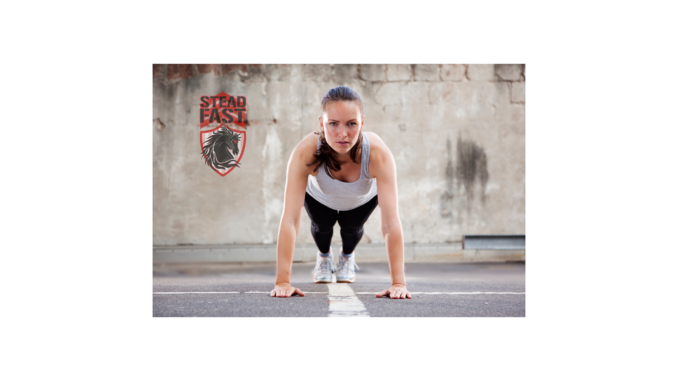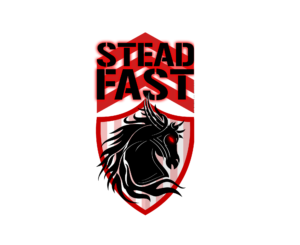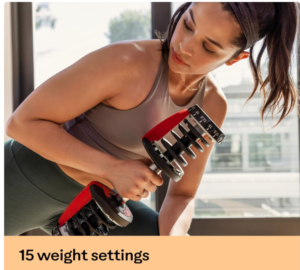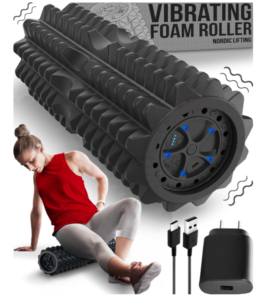
Whether you’re new to fitness or have been at it for a while, High-Intensity Interval Training (HIIT) can be a game-changer. In my 25 years as a personal trainer, I’ve seen firsthand how HIIT helps people burn fat, boost endurance, and build muscle. It’s especially effective if you’re short on time and need results without spending hours in the gym.
What is HIIT?
Alright, let’s keep it simple: HIIT is all about alternating between short bursts of high-intensity exercise and brief rest periods. For example, imagine you’re sprinting for 30 seconds, then slowing down to a walk for 1 minute. You repeat this cycle for 15-30 minutes. HIIT is designed to get your heart rate up quickly, allowing you to burn calories both during and after your workout.
One of the coolest things about HIIT is something called the ‘afterburn effect.’ After a good HIIT session, your body keeps burning calories for hours. It’s one of the reasons people love it so much—maximum results in minimal time.
Why HIIT is So Effective
HIIT works for almost everyone because it’s flexible and efficient. You can adapt it to fit your fitness level, whether you’re a beginner or an athlete. Here’s why it’s so effective:
Burn Fat Fast
During HIIT, you burn a ton of calories in a short time. Plus, thanks to the afterburn effect (excess post-exercise oxygen consumption), your metabolism stays elevated for hours after your workout.Improve Cardiovascular Health
HIIT is one of the quickest ways to improve your heart health and endurance. It pushes your cardiovascular system to work harder in those short bursts, improving your overall stamina.Save Time
Got a busy schedule? No problem. A solid HIIT session takes 20-30 minutes tops, and you’ll get the same, if not better, results than an hour of steady-state cardio.
Types of HIIT Workouts
There are several ways to do HIIT, and we can tailor it to fit your goals and preferences. Here are the main types:
Cardio HIIT
Great for burning fat and boosting endurance. Think sprints, cycling, or jump rope.
- Example: Sprint for 30 seconds, walk for 1 minute. Repeat for 20 minutes.
Strength HIIT
Want to build muscle while keeping your heart rate up? This combines bodyweight or dumbbell exercises with intervals.- Example: 40 seconds of push-ups, 20 seconds of rest. Repeat for 4 rounds.
Plyometric HIIT
This type uses explosive, jump-based movements like burpees and jump squats to develop power.- Example: 30 seconds of jump squats, 30 seconds rest. Repeat for 5 rounds.
Low-Impact HIIT
Not ready for high-impact movements? No worries—we can make it easier on your joints while still keeping things intense.- Example: 30 seconds of step-ups, 30 seconds rest. Repeat for 15 minutes.
The Benefits of HIIT
As a personal trainer, I’ve seen people transform their fitness with HIIT. Here’s why you should consider it:
Burn More Calories in Less Time
One of the biggest draws of HIIT is how efficient it is. In a typical workout, you can burn a similar amount of calories in 20-30 minutes of HIIT compared to a much longer, steady-state cardio session. Because HIIT is so intense, your heart rate stays elevated, which means more calories burned in a shorter amount of time.Afterburn Effect (EPOC)
Ever notice how your body feels warmer even hours after an intense workout? That’s the afterburn effect, or excess post-exercise oxygen consumption (EPOC). After a HIIT session, your body continues to burn calories as it works to recover. This means you’re still burning fat and calories even after you’ve left the gym, making HIIT a time-efficient way to boost metabolism.Preserve Muscle While Losing Fat
A common concern with traditional cardio is that while it helps you lose weight, it can also cause muscle loss. HIIT, on the other hand, has been shown to help preserve muscle mass while targeting fat. When you alternate between high-intensity intervals and recovery, your body’s energy demand encourages fat burning while preserving your lean muscle.Improves Heart Health
HIIT doesn’t just burn fat—it’s also great for your heart. Because the workouts are intense and elevate your heart rate to near its maximum, HIIT challenges your cardiovascular system, which helps to improve overall heart health. It’s been shown to improve blood pressure, reduce bad cholesterol, and increase VO2 max, which is the body’s ability to use oxygen efficiently during exercise.- Increased Endurance and Stamina
HIIT isn’t just about burning calories. It’s about making your body more efficient. By regularly pushing your body to its limits in short bursts, you improve your endurance. Over time, you’ll notice that you can run faster, lift more, or go harder without feeling as winded. This increased stamina carries over into all aspects of life, whether it’s sports, hiking, or even just climbing a flight of stairs. - Time Efficiency
We all have busy lives, right? One of the best things about HIIT is that you don’t need a lot of time to see results. A typical HIIT workout lasts just 20-30 minutes, but it delivers the same (or even better) results as an hour of steady-state cardio. It’s perfect for those with tight schedules, fitting into the day without the need for long gym sessions. No Equipment Needed
Another bonus: you don’t need a gym full of fancy equipment to get a great workout. HIIT can be done with just your bodyweight, making it a versatile option for home workouts. Whether you’re at home, on vacation, or at the gym, you can easily put together a HIIT routine that suits your environment. However, if you’re looking to step things up, using a set of adjustable dumbbells or resistance bands can make your sessions even more challenging and effective. I recommend Bowflex SelectTech to add variety and intensity to your HIIT routine.
ARE YOU READY FOR A NEW LEVEL OF INTENSITY?
Bonus Benefits: Mental Toughness and Motivation
I’ve noticed that HIIT also helps build mental toughness. Pushing yourself through those short, intense intervals can be challenging, but over time, it builds discipline and confidence. The structure of HIIT also keeps you motivated—since the intervals are short, you can always see the light at the end of the tunnel, making it easier to push yourself and stay consistent.
Potential Downsides of HIIT (and How to Avoid Them)
As effective as HIIT can be, it’s not without its challenges and risks. Like any form of high-intensity exercise, there are potential downsides, especially if you don’t approach it with proper care. Here are some things you should consider before diving into a HIIT routine:
Risk of Injury
HIIT involves explosive movements and quick changes in direction, which can increase the risk of injury, particularly for beginners or those unfamiliar with the exercises. Common injuries include muscle strains, sprains, or joint issues from improper form or overexertion. When you’re tired, it’s easier to let your form slip, especially during complex moves like burpees or jump squats.
How to avoid it:
Always prioritize proper form over speed. If you’re new to HIIT or certain exercises, start with bodyweight versions and gradually increase intensity. And remember, a proper warm-up before each session is crucial for prepping your muscles and joints.
Overtraining and Burnout
HIIT is intense, and because of that, it takes a toll on your body. If you’re not giving yourself enough time to recover between sessions, you risk overtraining. This can lead to fatigue, burnout, or even more severe conditions like chronic fatigue or a weakened immune system.
How to avoid it:
Stick to 2-3 HIIT sessions per week, allowing your muscles to recover in between. Be mindful of how your body feels, and if you start feeling constantly tired or sore, take it as a sign that your body needs a break.
Adverse Effects on Cardiac Patients
For people with underlying heart conditions, HIIT may not be the best option without clearance from a healthcare professional. Since HIIT involves rapidly increasing and maintaining a high heart rate, it can put stress on the cardiovascular system. Individuals with high blood pressure, arrhythmias, or other heart conditions could experience adverse effects like abnormal heart rhythms, spikes in blood pressure, or, in extreme cases, cardiac events during or after the workout.
How to avoid it:
If you have a heart condition or any cardiovascular concerns, consult with your doctor before starting a HIIT program. There are lower-intensity interval training (LIIT) alternatives that may be safer, allowing you to work out without putting excessive strain on your heart.
Mental Fatigue and Burnout
HIIT is mentally demanding. Pushing yourself through multiple rounds of high-intensity exercise can be tough, and if you do it too often, it can lead to mental burnout. Over time, you may start to dread workouts or feel less motivated to push yourself, which can hinder your progress.
How to avoid it:
Incorporate a variety of workouts into your routine to keep things fresh. You can alternate HIIT with lower-intensity cardio, strength training, or flexibility workouts to avoid monotony. Also, listen to your body and take rest days when you need them to maintain mental and physical balance.
How to Get Started with HIIT
So, you’re ready to dive into HIIT? Awesome! Here’s how we’ll approach it, step by step, to make sure you get the most out of it without feeling overwhelmed.
Start Slow and Build Up … I know the idea of HIIT sounds intense, and it is, but we’ll ease into it. The beauty of HIIT is that you don’t have to go full throttle right from the start. We’ll begin with longer rest periods and shorter work intervals. For example, you might work for 20 seconds and rest for 40 seconds, repeating that cycle. As your fitness improves, we’ll gradually increase the work time and shorten the rest periods.
Remember, it’s all about finding your own pace. You don’t need to compare yourself to anyone else. The goal is to push yourself, but not to the point of exhaustion.
Focus on Form First. Before we crank up the intensity, let’s get your form locked down.
FORM OVER FUNCTION. PERIOD!
Proper technique is crucial with HIIT because you’ll be moving fast and doing explosive exercises. Whether it’s squats, lunges, or push-ups, it’s better to do them correctly at a moderate pace than to rush through them and risk injury.
I’ll guide you through each movement, and we’ll start with bodyweight exercises before introducing any weights or equipment. Once you’re comfortable with the basics, we can start adding more complexity.
Set Realistic Goals. HIIT can work wonders for fat loss, endurance, and overall fitness, but it’s important to set goals that are realistic for you. Are you aiming to lose weight? Build endurance? Improve muscle tone? We’ll use your goals to guide how we structure your HIIT sessions.
And remember, results don’t happen overnight, especially with something as demanding as HIIT. You might feel sore after your first few sessions, but that’s part of the process. As long as you’re consistent, the progress will come.
Stick to 2-3 Sessions a Week It’s tempting to go all in, especially once you start seeing results. But trust me, more is not always better. Your body needs time to recover, especially with something as demanding as HIIT. I usually recommend starting with 2-3 sessions a week. That gives your muscles time to heal and ensures you’re fresh for each workout.
On your off days, we can mix in some low-intensity activities like walking, light cardio, or yoga to keep your body moving without overloading it.
Mix It Up to Stay Motivated The great thing about HIIT is that it’s incredibly versatile, so we’ll keep your workouts fresh by switching up the exercises. One day we might focus on cardio-based HIIT with sprints and burpees. Another day, we could do strength-based HIIT with dumbbells or resistance bands.
This way, you won’t get bored, and your body will keep adapting and improving. Plus, variety is key for keeping you motivated.
Warm-Up and Cool Down Properly Before jumping into the intense stuff, we need to get your body ready. A proper warm-up is essential—5-10 minutes of light cardio and dynamic stretches will help loosen up your muscles and prepare your joints for the work ahead.
After your HIIT session, don’t forget to cool down. We’ll spend a few minutes doing light stretching or walking to bring your heart rate down and reduce soreness. Trust me, your body will thank you the next day!
Using a Nordic Vibrating Foam Roller or stretching strap, can make your warm-up and cool-down more effective, ensuring your muscles are primed and ready for action.
FAQs ABOUT HIIT
Q: Can I do HIIT every day?
A: I wouldn’t recommend it. HIIT is intense, and your body needs time to recover. Aim for 2-3 times a week to start.
Q: Is HIIT good for weight loss?
A: Absolutely. HIIT is one of the best ways to burn fat while maintaining muscle mass. Plus, the afterburn effect keeps your metabolism revved up long after your workout.
Q: What equipment do I need for HIIT?
A: You don’t need much! Bodyweight exercises work great, but if you have dumbbells, kettlebells, or resistance bands, we can add those for more variety.
Q: Can I do HIIT if I’m older or have joint issues?
A: Yes! HIIT can be modified to fit any fitness level. If you have joint issues, we can opt for low-impact exercises like step-ups or cycling instead of jumping movements. It’s important to listen to your body and adjust accordingly.
Q: Will HIIT build muscle, or should I focus on strength training?
A: HIIT can help maintain and build muscle, especially if you incorporate strength-based exercises like squats or kettlebell swings. However, if muscle growth is your primary goal, combining HIIT with focused strength training would be ideal.
Q: How soon will I see results from HIIT?
A: It depends on consistency and your overall fitness routine, but many people start noticing improvements in stamina and fat loss within 4-6 weeks of regular HIIT sessions. Remember, diet and recovery play a big role too!
Final Thoughts
After 25 years of training clients, I can confidently say HIIT is one of the most efficient and effective training methods out there. Whether you’re looking to lose fat, build muscle, or improve endurance, HIIT is a powerful tool to help you reach your goals.
But remember—HIIT is intense, and it’s important to pace yourself. Start slow, focus on form, and give your body time to recover. If you stick with it, you’ll be amazed at the results.
So, are you ready to give HIIT a try?




